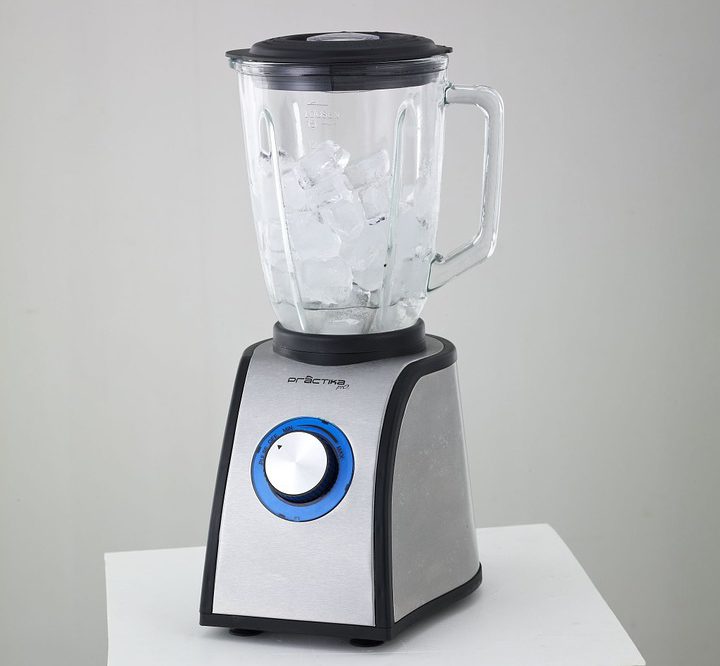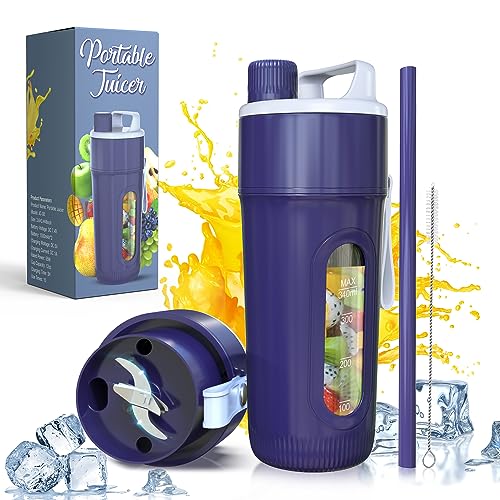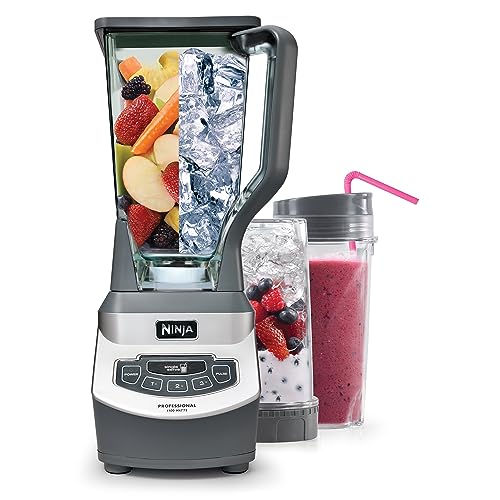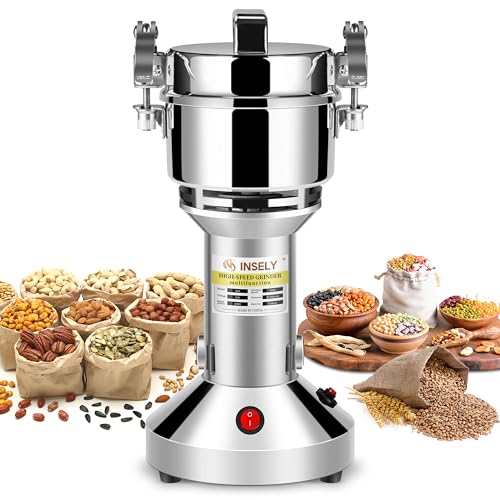Blender Not Blending? Troubleshoot with These Fixes!
Blender not blending often stems from dull blades or a motor issue. Fixing it can involve sharpening blades or resetting the motor.
Encountering a blender that won’t blend can be frustrating, whether you’re preparing a smoothie or pureeing soup. Blenders are indispensable kitchen tools, so when they malfunction, it disrupts your cooking flow. A common culprit is the blade assembly; over time, blades may become dull or obstructed, hindering their ability to cut through ingredients.
Equally detrimental is a motor that refuses to run properly, which might just need a simple reset. Tackling these issues promptly ensures your blender remains a reliable part of your kitchen arsenal. This guide dives into common problems with non-performing blenders and how to quickly resolve them, ensuring your appliance is back in action with minimal downtime.
Common Causes Behind Blender Malfunctions
Your blender is the unsung hero of your kitchen appliances. When it stops working, it’s a real headache. Understanding common issues can help. This guide pinpoints typical problems and provides quick fixes.
Power Supply Hiccups
It starts with electricity. Blenders need proper power to function. Is your blender not responding? Check these:
- Are the outlets working? Test them with another appliance.
- Is the plug damaged? Look for bends or breaks.
- Cord issues? Unwrap cord. Check for cuts or fraying.
Try these steps if you find a power issue:
- Reset your home’s circuit breaker.
- Replace the fuse if your blender has one.
- Consider a professional for cord repairs.
Motor And Blade Issues
Blenders have motors and blades that do the tough work. Problems here can stop blending in its tracks.
| Motor Signs | Blade Signs |
|---|---|
| Loud noise | Dull or stuck blades |
| Smoke | Not spinning |
| Nothing moves | Uneven chopping |
For motor or blade issues:
- Clean the blades. Remove food gunk carefully.
- Check for obstructions. Ensure nothing blocks the blade’s path.
- Seek a professional. Motor problems often need expert attention.
Overheating And Automatic Shutdown
Blenders have safeguards. They shut down if they get too hot. Overloading or long runs usually cause this.
- Let it cool down. Give it a rest before trying again.
- Remove some contents. Overfilling can overheat it.
- Use pulses. Short bursts help prevent overheating.
Remember, always unplug your blender before any troubleshooting. Tackle these common issues and keep your blender in top shape!
Initial Checks And Quick Fixes
Before diving into complex troubleshooting, let’s start with some simple steps. These often-overlooked solutions fix blender issues quickly.
Is It Plugged In? Ensuring Power Connectivity
A blender that won’t start might just need a power check. Ensure it’s plugged in properly. Double-check your outlet too. Sometimes, a tripped circuit breaker or a blown fuse can be the culprit. Press the reset button on the blender’s plug if available.
Lid And Assembly Mishaps
Incorrect assembly can halt your blending. Make sure all parts fit together correctly. The lid must be secure.
- Ensure the jar sits on the base snugly.
- Confirm that the blade assembly is tight.
- Check for foreign objects preventing the lid from closing.
Adjusting The Settings: Speed And Mode
For efficient blending, the correct settings are key. Your blender’s manual outlines the ideal settings for different ingredients. Start with a low speed and increase gradually. Use specified modes like ‘chop’, ‘puree’, or ‘liquefy’ for best results.
| Ingredient Type | Recommended Speed | Mode |
|---|---|---|
| Soft Fruits | Medium | Puree |
| Hard Vegetables | High | Liquefy |
| Ice | High | Crush |
When To Clean And How
Blenders are powerful kitchen allies. Yet, sometimes they stop blending well. Dirty or clogged parts often cause this problem. Knowing when and how to clean your blender is key to keeping it in top shape. Follow simple steps to maintain your appliance.
Regular Cleaning For Optimal Performance
Clean your blender after each use. Don’t let food residue dry and stick. A quick rinse won’t suffice.
- Unplug the blender
- Disassemble the jar, lid, and blade
- Use warm, soapy water to wash each part
- Rinse with clean water
- Dry all components before reassembling
For stubborn stains, create a cleaning solution:
- Fill the blender jar halfway with warm water
- Add a drop of dish soap
- Put the lid on and blend for 30 seconds
- Rinse and dry
Unclogging The Blades: A Step-by-step Guide
Blender blades can become clogged, impacting performance. Cleaning is simple:
| Step | Action |
|---|---|
| 1 | Unplug and disassemble blender |
| 2 | Remove the blade carefully |
| 3 | Soak blade in warm, soapy water |
| 4 | Use a brush to remove debris |
| 5 | Rinse, dry, and reassemble |
Replacing Worn-out Seals And Gaskets
Old seals and gaskets cause leaks and reduce blending power. Replace them regularly. Follow these steps:
- Check your model for specific instructions
- Purchase the right seal and gasket
- Unplug and disassemble the blender
- Remove the old seal carefully
- Place the new seal properly
- Reassemble and test for leaks

Credit: www.ifixit.com
Diy Repairs For The Handy Homeowner
Blender issues can pop up without warning, leaving your smoothie dreams on hold. But fear not! With basic tools and a bit of know-how, you can perform your own DIY repairs at home. Whether it’s blunt blades, a loose base, or a motor on the fritz, we’ve got you covered. Roll up your sleeves and prepare to bring your blender back to life with these simple fixes.
Replacing Dull Blades
Dull blades make blending a drag. A sharp set ensures smooth blends every time. Follow these steps to replace them:
- Unplug the blender.
- Remove the blender jar from the base.
- Twist off the base of the jar to expose the blades.
- Use a wrench to unscrew the old blades.
- Attach the new blades and tighten them firmly.
- Reassemble the blender jar.
Tightening Loose Couplings
A wobbly base often means loose couplings. To tighten them up:
- Unplug the appliance.
- Flip the blender to access the coupling.
- Use a screwdriver to adjust the screws.
- Make sure everything is snug.
- Test the fit by reassembling and running the blender.
Troubleshooting Motor Problems
Sometimes, the motor may give you grief. Common signs include smoke, a burning smell, or unusual noise. Here’s a quick way to troubleshoot:
- Unplug and open the base to reach the motor.
- Inspect for any visible damage or debris.
- Clean out any obstructions carefully.
- Check for loose wires and reconnect them.
- If the motor is burned out, consider replacing it.
Always seek professional help if you’re unsure. Tinkering with electrical appliances carries risks.
Recognizing When It’s Time For Professional Help
Is your blender not living up to its smooth-spinning promises? Sometimes, the fix is not within amateur reach. Acknowledge when it’s better to seek a professional’s touch to get your blender back in action.
Assessing Warranty And Service Options
Before diving into the toolbox, check your blender’s warranty. A valid warranty might offer a free repair or replacement. Here’s a simple guide to move forward:
- Locate purchase documents for warranty details.
- Contact the manufacturer for service eligibility.
- Review the warranty terms for coverage specifics.
Complex Repairs: When Diy Won’t Cut It
Complicated issues call for expert repairs. If you experience these signs, avoid DIY:
| Sign | Action Needed |
|---|---|
| Motor smells burnt | Professional motor servicing |
| Electrical sparks | Expert electrical assessment |
| Loud, abnormal noises | Specialist diagnosis |
Finding A Reputable Appliance Repair Service
Ensure your blender is in capable hands. Seek a skilled technician by:
- Searching for local repair services with excellent ratings.
- Checking reviews and testimonials for quality service history.
- Verifying certifications and experience in appliance repair.

Credit: www.reddit.com
Preventive Measures And Blender Care Tips
Keeping your blender in top shape is not just about fixing problems. It’s about avoiding them too. Good care can keep your blender blending without trouble. Let’s talk about steps to stop issues before they start, so your blender keeps working for you.
Avoiding Overfilling And Hard Ingredients
Blenders have limits. Fill them too much, and they won’t blend well. To keep yours running smooth, follow these tips:
- Check max fill lines – Every blender jar has them. Stick to these lines.
- Chop it up – Big chunks can jam your blender. Cut food into smaller pieces first.
- Alternate layers – Hard and soft foods should mix. It helps the blades move easy.
- Begin low, go slow – Start on low power and slowly turn it up. This eases the load on your blender.
Routine Maintenance Checklist
A little love goes a long way. Keep your blender happy with these routine care steps:
| Step | Action |
|---|---|
| Clean Right Away | Don’t wait; food residue can stick and stain. Rinse immediately after use. |
| Check Seals & Gaskets | Look for wear – replace these parts if they look damaged. |
| Tighten Loose Parts | Handles and base parts can loosen over time. Tighten them up gently. |
| Blade Care | Keep them sharp – a blunt blade makes your blender work harder. |
| Regular Inspections | Give your blender a once-over each month. Spot problems early. |
Long-term Storage Advice
Not blending for a while? Here’s how to store your blender:
- Clean and Dry – Puree won’t become a science experiment.
- Remove Components – Blades and cups can store separately for safety.
- Store Upright – This saves space and keeps your blender ready to go.
- Keep Covered – A cover stops dust and dirt from getting in.

Credit: www.youtube.com
Frequently Asked Questions On Blender Not Blending Common Reasons And Solutions
Why Is My Blender Not Starting?
A blender may not start due to a lack of power, a malfunctioning outlet, or an overheated motor. Ensure the blender is plugged in and the outlet is functioning. If it’s been used for an extended period, let it cool down before restarting.
What Causes A Blender To Jam?
Jammed blenders can result from overloading or blending hard, large ingredients. To fix, turn off the device, remove some contents, and cut any remaining large pieces into smaller chunks. Always add sufficient liquid to facilitate blending.
How Can I Unstick Blender Blades?
Unsticking blender blades involves safely disassembling the base and removing any obstructions. Ensure the blender is unplugged before carefully checking for tangled food or foreign objects. Clean the blades thoroughly before reassembling the blender.
Can An Old Blender Cause Poor Performance?
Yes, wear and tear on an older blender can lead to poor performance. Dull blades, weakened motor, or damaged coupling can affect its blending power. Consider replacing the blades or servicing the blender for better results.
Conclusion
Wrapping up, a non-functioning blender can be a real headache. From dull blades to motor issues, we’ve covered the frequent culprits and their fixes. Remember, regular maintenance and careful operation are key. With these insights, you’re now equipped to tackle any blending obstacle.
Blend on and enjoy smooth, hassle-free results!





